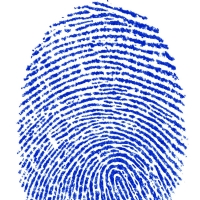New Biometric Security with 3D Fingerprint Scans

With smartphones on the way to becoming the central repository for our personal, financial, and professional lives, better security above and beyond mere passwords is a must-have. Biometric authentication offers enhanced security, and while iris and facial recognition technologies are intriguing, the most common biometric so far is fingerprint scans.
However, current fingerprint sensor technology that relies on a two-dimensional image of your fingerprint has proven to be far from hack-proof. Capacitive fingerprint sensors are also extremely sensitive to contamination and moisture on the finger.
Researchers at the Berkeley Sensor and Actuator Center, which is located on the campuses of the University of California, Davis and the University of California, Berkeley, are working on a potential security solution that’s similar to medical ultrasound imaging. The technology is a tiny ultrasonic fingerprint sensor that can measure a 3D image of your finger’s surface, along with a shallow layer of tissue underneath. A fingerprint's valleys and ridges are easily distinguished and unique.
According to David A. Horsley, professor of mechanical and aerospace engineering at the University of California, Davis and BSAC co-director, “Ultrasound images are collected in the same way that medical ultrasound is conducted. Transducers on the chip’s surface emit a pulse of ultrasound, and these same transducers receive echoes returning from the ridges and valleys of your fingerprint’s surface.”
The basis for the 3D ultrasound sensor is an array of microelectromechanical systems (MEMS) ultrasound devices. The group used existing MEMS technology, which smartphones use for microphones and directional orientation, to fabricate the 3D imager. The chip is made from two wafers bonded together, a MEMS wafer that contains the ultrasound transducers, and a CMOS wafer with the signal processing circuitry. The MEMS wafer is then thinned to expose the ultrasound transducers. CMOS, or complementary metal–oxide–semiconductor, is the silicon-based technology used to make transistors in microchips.
In addition to biometrics and information security, Horsley believes the technology could eventually be used as a low-cost ultrasound for a medical diagnostic tool or for personal health monitoring.
Further details are found in Ultrasonic Fingerprint Sensor Using a Piezoelectronic Micromachined Ultrasonic Transducer Array Integrated with CMOS Electronic, a publication of the journal Applied Physics Letters from the American Institute of Physics.

